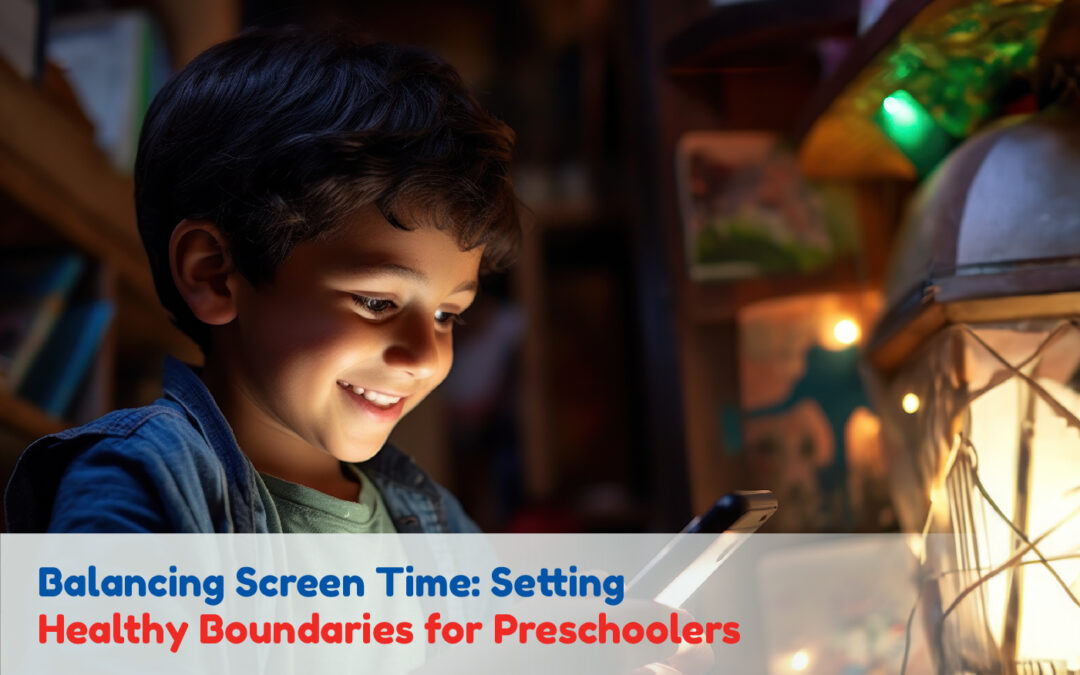In today’s digital age, screens are integral to our lives. From smartphones to tablets, televisions to computers, screens are everywhere, and even our young children are becoming proficient in their use. While technology can offer educational benefits, balancing screen time is crucial with other activities to support healthy development in preschoolers.
Let us look at some guidelines and tips for parents to manage screen time effectively for their young children.
Understanding the Impact of Balancing Screen Time
Before diving into guidelines, it’s essential to understand why balancing screen time is critical:
Physical Health: Excessive screen time can lead to sedentary behaviour, which may contribute to childhood obesity and other health issues.
Sleep Disruption: Screens use, especially before bedtime, can interfere with sleep patterns due to the blue light emitted by devices.
Developmental Concerns: Overreliance on screens can impact language development, social skills, and attention spans.
Behavioural Issues: High screen time is often associated with behavioural problems, such as increased aggression or irritability. Read more about the impact of excessive screen time on kids
Guidelines for Managing Screen Time
Here are some suggested guidelines that can help parents set healthy boundaries for their preschoolers:
Limited Screen Time: For children aged 2 to 5 years, screen time can be limited to about one hour per day of high-quality programming. Screen time should be avoided for children younger than 18 months, except maybe for video chatting.
Choose Quality Content: Opt for educational programs that promote learning and positive behaviours.
Co-view and Engage: Whenever possible, watch programs with your child. This helps you monitor what they are watching and provides opportunities to discuss the content and reinforce learning.
Create Tech-Free Zones: Have specific areas of your home, such as the bedrooms or the dining room, as screen-free zones to encourage family interaction.
Set a Good Example: Children often imitate their parents’ behaviour. You can set a positive example by modelling good screen habits, such as limiting screen time and engaging in other activities with your children.
Tips for a Balanced Approach
Encourage Fun Activities: Promote various activities that do not involve screens. This includes outdoor play, reading books, doing puzzles, and engaging in arts and crafts.
Establish a Routine: Create a daily schedule with specific screen-use times and other activities. Consistency helps children understand when it is appropriate to use screens and when it’s time for different activities.
Interactive Screen Time: Encourage interactive screen time where the child is actively engaged, such as educational games or video calls with family members, rather than passive consumption.
Be Mindful of Content: Ensure the content is age-appropriate and aligns with your family’s values. Use parental controls to block inappropriate content.
Educate About Screens: Teach your child about the purpose of screens and the importance of using them wisely. Explain that screens are tools for learning and entertainment, not a primary source of activity.
Conclusion:
Balancing screen time for preschoolers is about creating a healthy, structured environment where technology is just one of many tools for learning and fun. By setting clear boundaries, choosing quality content, and encouraging various activities, parents can help their children develop a balanced relationship with screens. Remember, the goal is to ensure that screen time is limited to support your child’s overall development and well-being.

